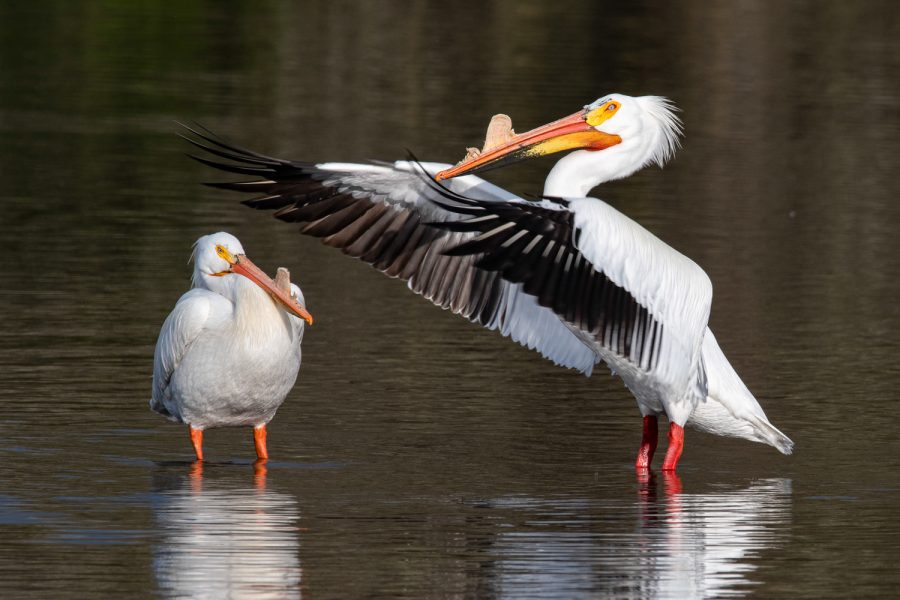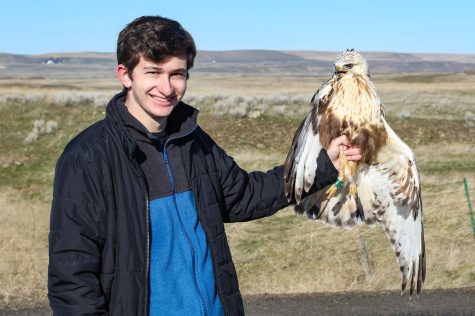Wildlife of the Week: American white pelican
Pullman residents can head down to parks alongside the Snake River in spring or fall to see these birds for themselves
When the birds are ready to mate, they develop a distinct knob on the end of their giant bills to showcase to potential partners
July 29, 2022
The American white pelican is one of the largest birds in North America, with a massive wingspan of up to 9 feet and a face resembling dinosaurs. In famed naturalist Aldo Leopold’s well-known publication “Sand County Almanac,” he described these pelicans as “descending in majestic spirals to the welcoming wastes of a bygone age.”
American white pelicans spend their winters along the Gulf of Mexico and Southern California, and during the spring they fly north in droves of hundreds to inland lakes and rivers to breed, according to Birds of the World.
When the birds are ready to mate, they develop a distinct knob on the end of their giant bills to showcase to potential partners.
After their young hatch, the colonies of pelicans often keep them all together in one area for protection, and while most adults fly off to catch fish, some stay behind to take care of the chicks.
Since the primary food source of pelicans is fish, they have developed a very unique hunting method. Through evolution, pelicans have developed a massive pouch supported under their lengthy bill, allowing them to feed almost like one might swing a net in the water.
This foraging method is described as, “dipping [the] bill into water and scooping up fish in [their] pouch,” according to the Audubon Field Guide.
This strategy has proven very successful for pelicans and is quite enjoyable to watch too. To any Pullman residents interested, they can head down to parks alongside the Snake River in spring or fall to see for themselves.


















